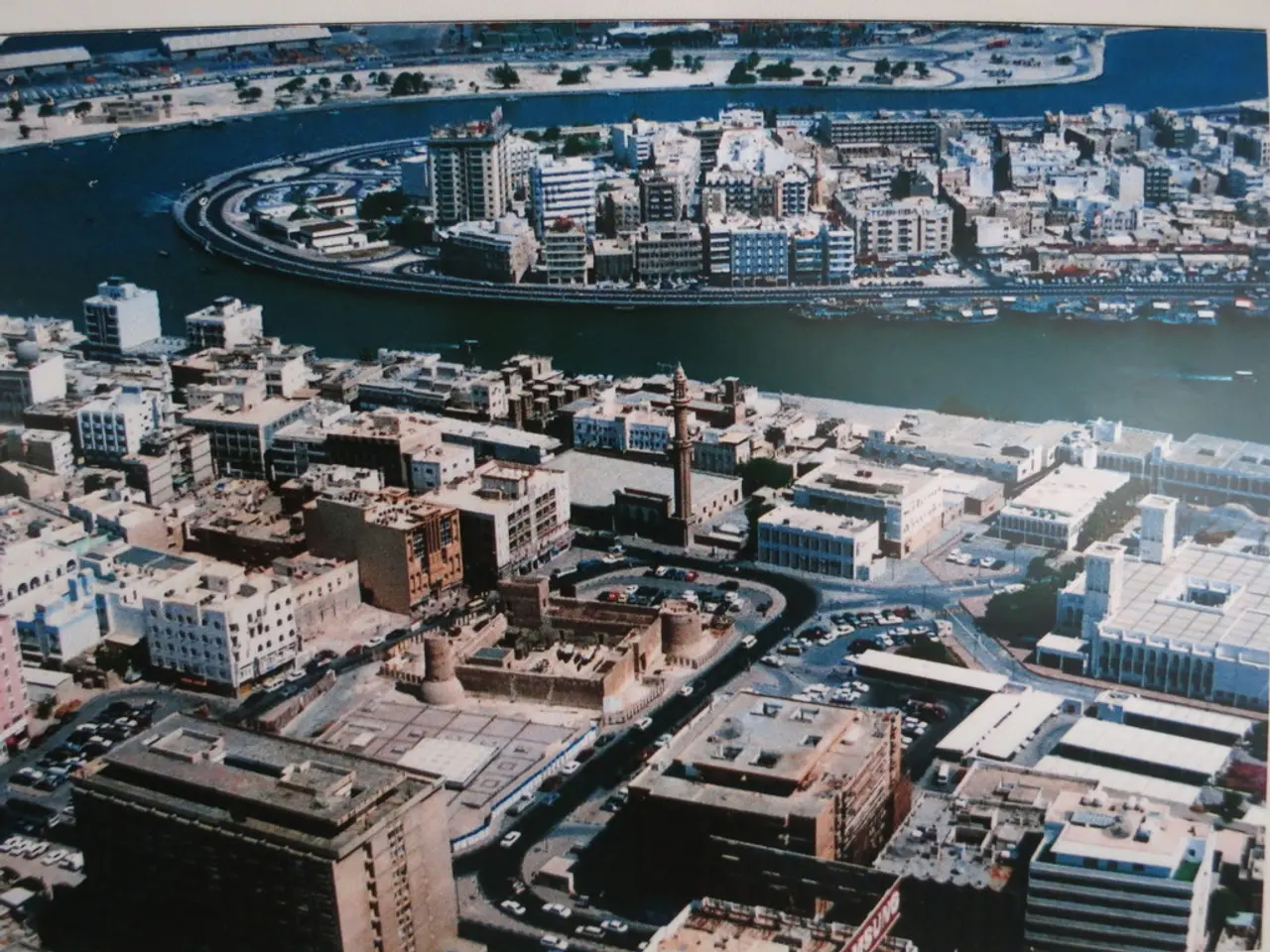Looming congestion issues on the Silk Road require substantial financial investment to address them effectively.
In the heart of Central Asia, a series of transport corridors are being developed to connect the region with Europe and beyond. One of the most promising options is the Middle Corridor, which has recently gained attention due to its potential to offer a viable alternative to the Northern Corridor.
The European Bank for Reconstruction and Development (EBRD) is currently conducting a study on sustainable transport connections between Central Asia and Europe, funded by the European Commission. The study aims to identify the most sustainable transport corridors connecting Central Asian countries with TEN-T, a network of infrastructure within the European Union, and to propose actions for their development.
One key finding of the study so far is that the Middle Corridor, which involves the countries of Azerbaijan, Georgia, and Turkey, could be the next best option for alternative routes to the Northern Corridor. The interim findings point to this corridor as a more sustainable and efficient option, especially considering the inefficiencies at border crossing points and bottlenecks in Aktau and Kuryk, the Caspian Sea ports of Kazakhstan.
However, the route through Turkmenistan and Iran has several serious limitations, including complicated sanitary and logistical requirements, the need for bilateral agreements, and sanctions on Iran. In contrast, the port in Turkmenistan presents a bigger bottleneck than the Kazakh ports. The route through Turkmenbashi has the highest transit tariff and is barely economically viable due to inefficiency and limited feeder vessels.
Uzbekistan, as a landlocked country, will rely on transit routes through other countries to present itself as a viable transit option. To improve its transport links, Uzbekistan should modernize its rolling stock and customs services, and reform its railways to increase efficiency. Significant investment is required for electrifying sections of railway and rehabilitating roads across the country.
Uzbekistan is exploring multiple transportation options, including road and rail routes from China through Kyrgyzstan, the Trans-Afghan route, Turkmenistan and Iran, Kazakhstan's Middle Corridor, and the Turkmen port of Turkmenbashi. The success of the Middle Corridor depends on all countries along the route working seamlessly, eliminating trade barriers, and setting up regular and reliable freight schedules to offer a predictable and reliable environment for all parties involved.
The annual volume of freight cargo through the Middle Corridor in 2022 may reach 80,000 TEUs (twenty-foot equivalent units), but this is near its maximum throughput capacity of 100,000-120,000 TEUs. To expand its capacity to 200,000 TEUs, significant infrastructure investments are needed, including upgrading rail connections, enhancing logistics hubs, expanding port capacities, and improving customs procedures along the corridor.
The EBRD estimates immediate investment needs for Middle Corridor infrastructure upgrades to be in the region of 3.5 billion euros. This investment could help the Middle Corridor become a more sustainable and efficient transport option, providing a much-needed boost to the economies of the countries involved and improving the overall transport infrastructure in the region.
Meanwhile, the Eurasian Northern Corridor, the main trade route linking northeast Asia with Europe, transported around 1.5 million TEUs of cargo in 2021. Global Gateway, an international infrastructure plan unveiled by the European Commission, aims to mobilise 300 billion euros in public and private infrastructure investment to challenge China's Belt and Road Initiative (BRI), which was launched in 2013 to fund infrastructure projects in developing countries.
As the Middle Corridor continues to develop, it will be interesting to see how it compares to the Northern Corridor and other transport options in the region. With the right investments and cooperation between countries, the Middle Corridor could become a key player in the transport of freight cargo between Central Asia and Europe.
Read also:
- Stopping Osteoporosis Treatment: Timeline Considerations
- Tobacco industry's suggested changes on a legislative modification are disregarded by health journalists
- Trump's Policies: Tariffs, AI, Surveillance, and Possible Martial Law
- Expanded Community Health Involvement by CK Birla Hospitals, Jaipur, Maintained Through Consistent Outreach Programs Across Rajasthan





